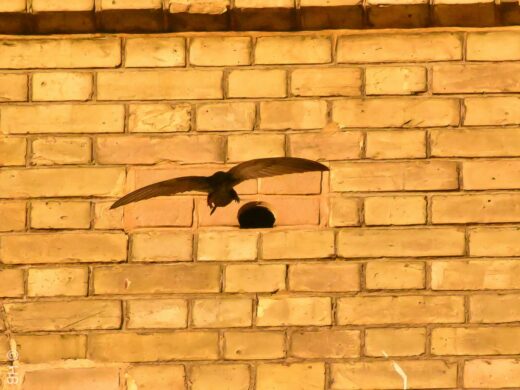Eco-habitats: Built Environment Biodiversity, Green architectural design, Wienerberger news
Eco-habitats: Built Environment Biodiversity News
post updated 27 July 2025
Exploring the role of Eco-habitats in the drive for Biodiversity Net Gain
6 April 2022
The Changing Shape of Biodiversity in the Built Environment
With architects facing greater pressure to improve sustainability and biodiversity measures, Wienerberger UK and Ireland has launched a new specialist report exploring the role of Eco-habitats in the drive for Biodiversity Net Gain.
The Changing Shape of Biodiversity in the Built Environment has been prepared by environmental specialists at Wienerberger, addressing the challenges faced by the construction industry as they seek to meet enhanced Biodiversity Net Gain requirements.
It sets out the regulatory drivers that are shaping modern developments, including the National Planning Policy Framework and Environment Act 2021, as well as changing consumer attitudes to outdoor spaces.
The specialist report introduces the benefits of Eco-habitats such as bird boxes, bat boxes and bee bricks, providing a range of fuss-free solutions that can provide supplementary enhancements within a Biodiversity Net Gain report. Experts from Wienerberger also offer installation and placement tips to help maximise nesting opportunities.
It is available to download for free from Wienerberger’s website, providing a vital resource for anybody involved in the planning, design and construction of new buildings.
The foreword is provided by Frances Tophill, British horticulturist, author and presenter. She said: “I’ve seen first-hand the catastrophic impact humans have on the natural world. But crucially, what a vital role we have to play in habitat regeneration and the protection of a myriad of species. Experience has taught us that preserving and conserving existing habitats is always superior to rebuilding it. Sustainable, considerate and habitat rich construction, whether for new projects or for renovations, can allow species to move quickly back into their environment, and live alongside us with minimal disruption.”
Paul Hodgkinson, Director of New Business Development at Wienerberger UK and Ireland, said: “This is a critical time for sustainability in construction and biodiversity is no longer a box ticking exercise. It’s vital that architects, specifiers and developers understand the impact of their decisions and how they can work to help drive the necessary improvements.
“Our specialist report introduces the notion of a ‘biodiversity trilemma’ which is impacting those responsible for the delivery of new construction projects; evolving legislation, an ongoing decline in species abundance and a greater appreciation and understanding of environmental matters from house buyers and building users.
“Although there is currently no quantitative value assigned to Eco-habitats within the Biodiversity Net Gain metric, Eco-habitats can support developers to overcome the biodiversity challenge.”
The Changing Shape of Biodiversity in the Built Environment – Exploring the role of Eco-habitats in the drive for Biodiversity Net Gain is available to download for free. Visit https://www.wienerberger.co.uk/biodiversity-report.html
Comments / photos for the Eco-habitats: Built Environment Biodiversity page welcome



